The walk into the Crater del Hoyazo allows you to see evidence of the volcanic activity and mountain building tectonics that created the Cabo de Gata millions of years ago. You may also be lucky and find garnets and a semi precious gemstone called cordierite, locally known as sapphires.
By Nick Nutter | Updated 23 Apr 2023 | Almería | Walking |
Login to add to YOUR Favourites or Read Later
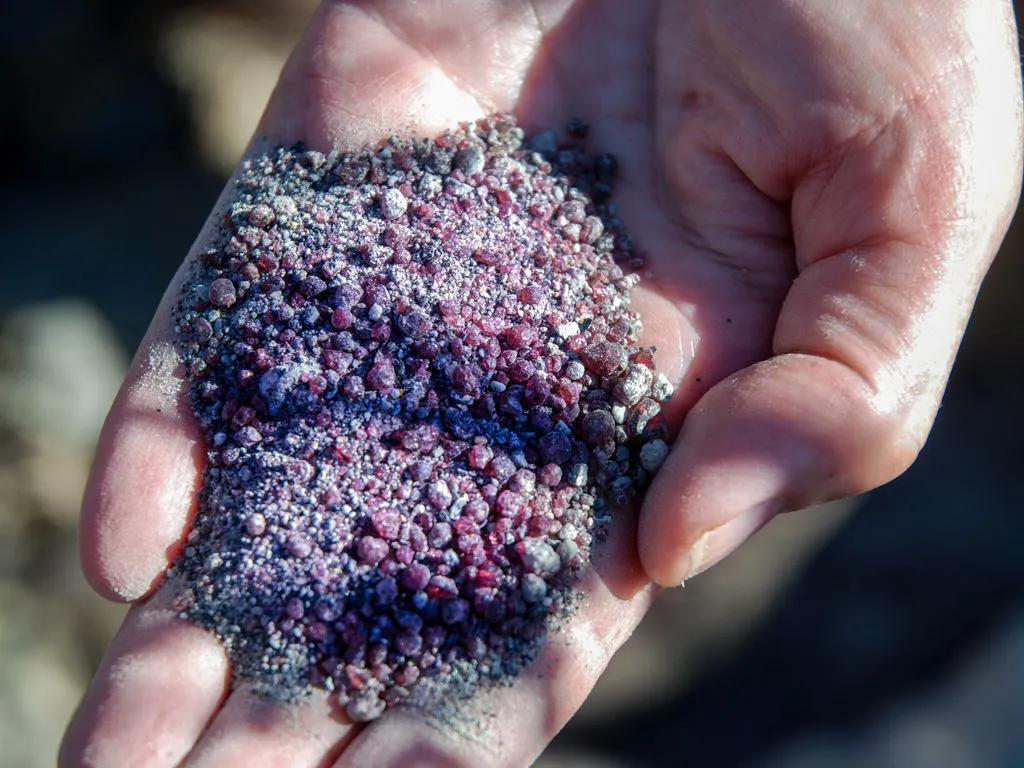
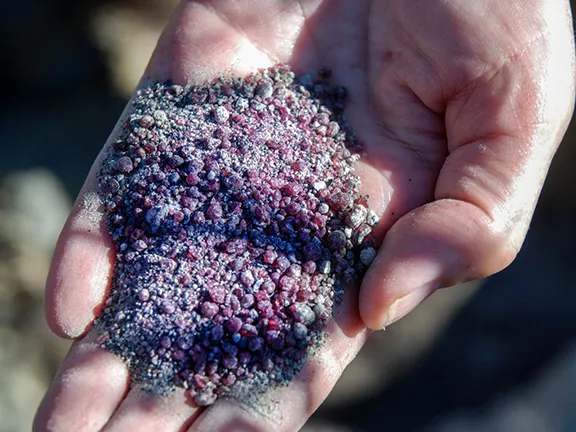
A Fistful of Garnets
This short walk has it all, an almost perfect crater - really a pseudocrater which is even more exciting, great views, fossils and an excellent chance of finding garnets and 'sapphires' in the wild as it were.
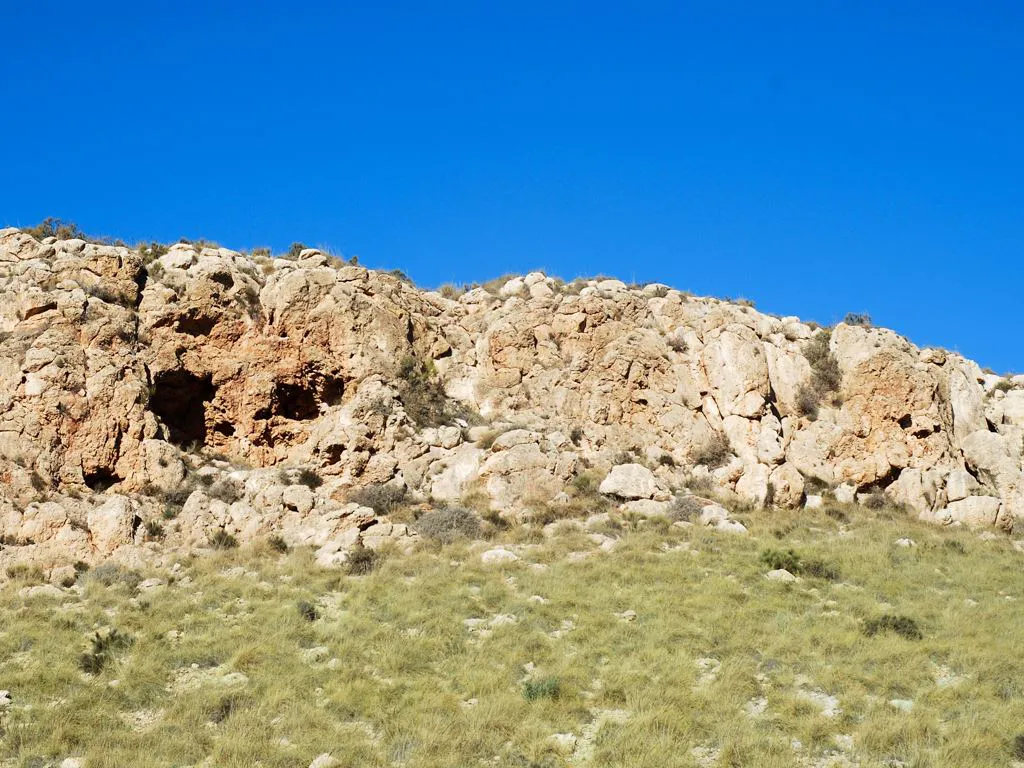
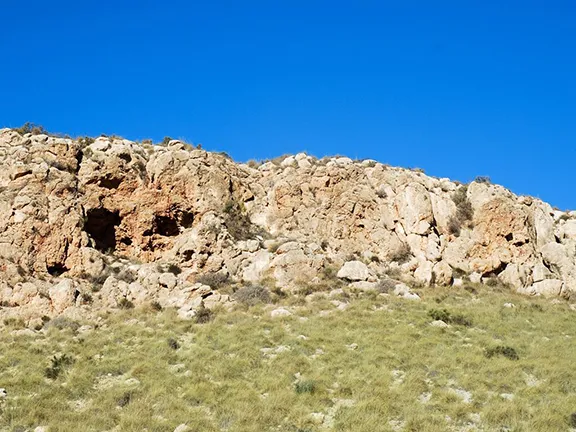
Crater del Hoyazo Coral Rim
Garnets have been the gem of choice for the rich and famous for thousands of years. Red garnet necklaces have been found in the tombs of Egyptian Pharaohs and ancient Romans used garnets in signet rings to stamp wax seals on important documents.
Garnets form in metamorphic rocks and in igneous rocks, that is rocks that have formed from magma, from deep in the earth’s crust. Normally garnets require extremely high temperatures and most importantly, extreme pressure, and form in metamorphic rocks; rocks altered by high pressure after they have formed such as schist, gneiss, quartzite and marble. Typical metamorphic rocks are severely folded in places where tectonic plates meet.
More rarely, garnets form in igneous rocks such as dacite. Why and how they form in such rocks is, believe it or not in this modern scientific age, not clearly known. What is known is that in order to form in igneous rocks there has to be a presence of manganese. So, what do we know about garnets that form in dacite?
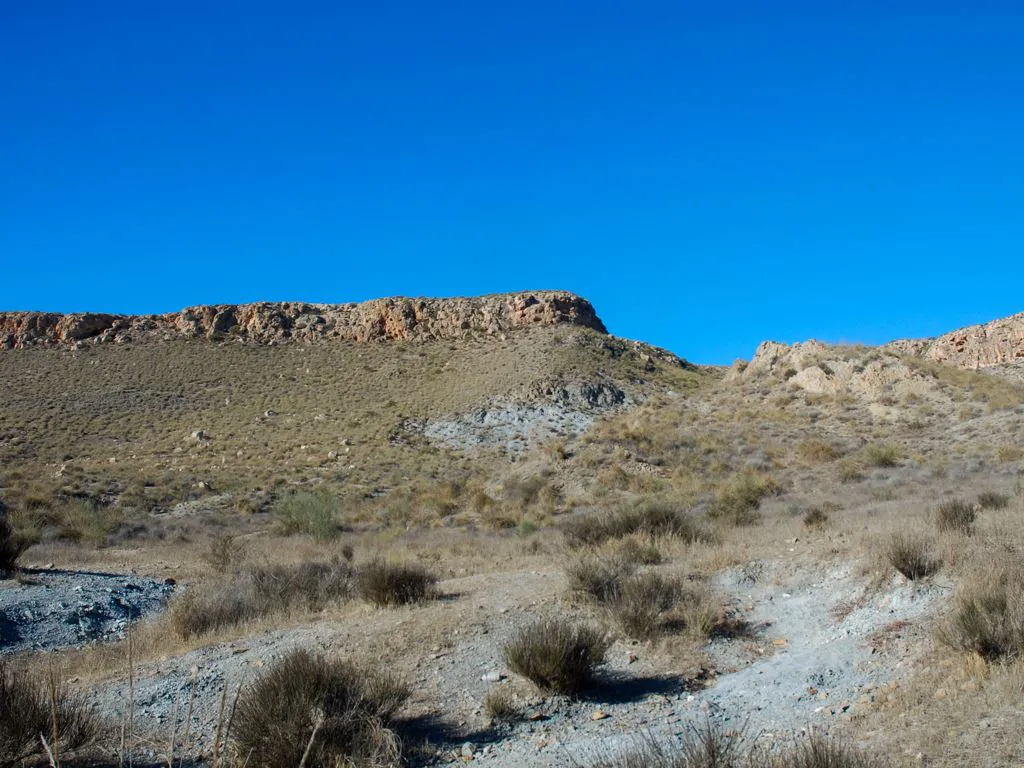
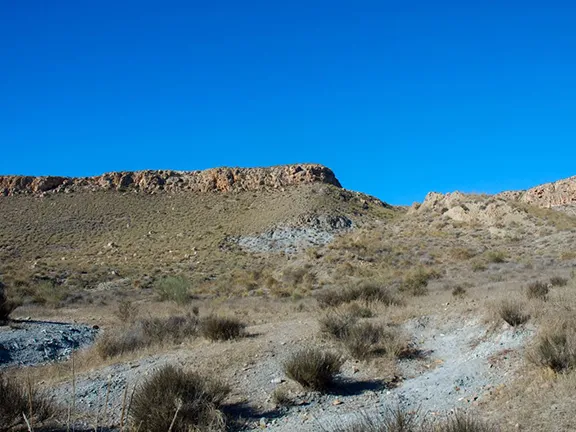
Carter del Hoyaza Caldera
Start with a volcano erupting magma, either as a flow or a very hot ash that formed dense deposits. These materials would have started at around 700-900 °C, and contained a lot of gasses. Those gasses, plus heated groundwater, would be looking for a way out. They would seek out joints and fractures and find their way into hollow cavities. Water, hydrogen, and carbon monoxide would continue on their journey, while some metals like manganese and aluminium, plus other condensable elements, would begin condensing into crystals. The temperatures would still be relatively high: we know they must have been around 600°C. Snuggled into the flows, where cooling was slower, crystals grew. Our garnets are red and formed of manganese, aluminium and silicon oxide. The Greeks had a name for them: pyrope, meaning ‘fire eyed’.
And this is how we find them today, tucked within voids inside the dacite, which we never would have expected to contain such a thing.
The garnets found in the Crater del Hoyazo are a type of garnet called almandine. They are a deep red to reddish-brown gemstone prized for their beauty and durability, and they are often used in jewellery. Almandine is one of the most common and widespread types of garnet, and is found in many other parts of the world, including the United States, Brazil, India, and Madagascar.
The name "almandine" comes from the ancient city of Alabanda in Asia Minor, where the mineral was first discovered.
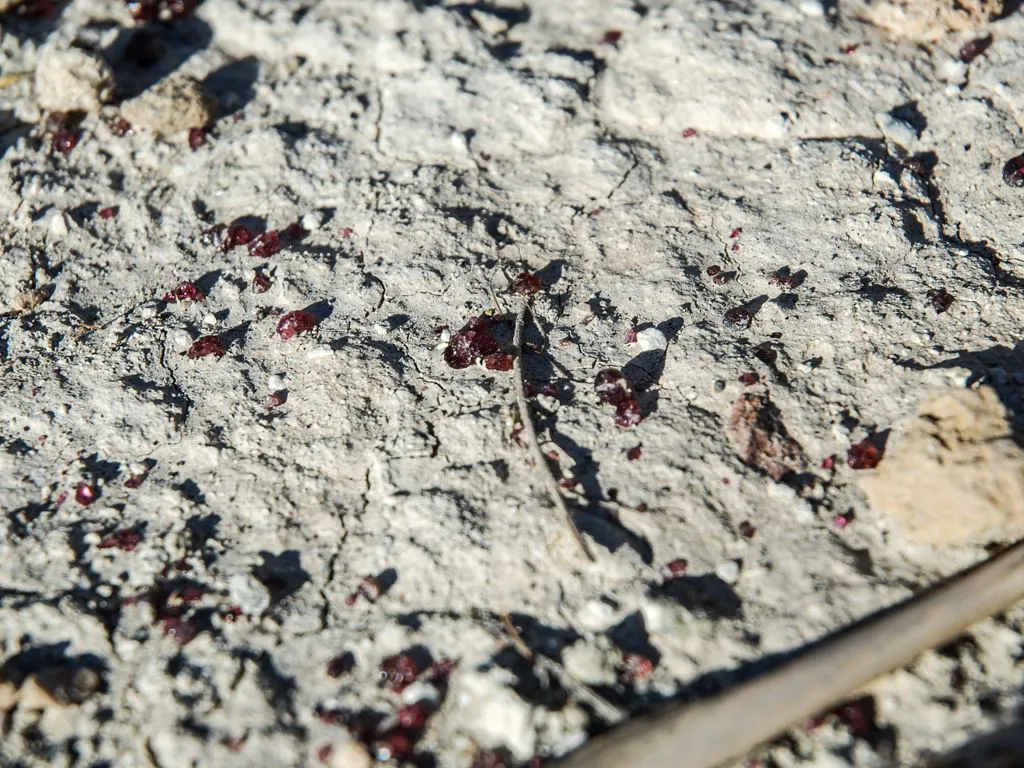
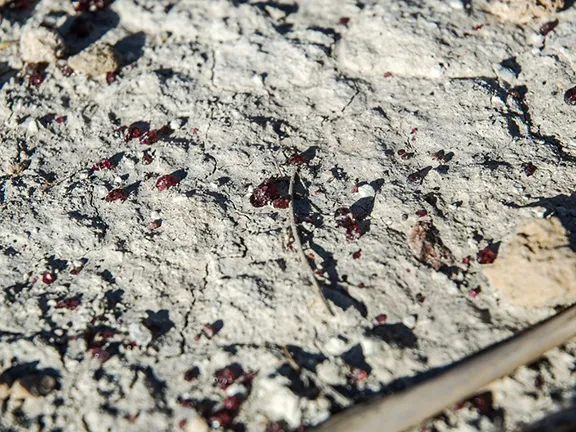
Rhyolite and Garnets
Sorry folks, the crystals locally known as 'sapphires' found in the Crater del Hoyazo are actually a mineral called cordierite.
Cordierite is often found in metamorphic rocks that have undergone high-grade regional metamorphism, such as those associated with mountain-building events. It is also commonly found in some igneous rocks, such as granite, where it can form as a result of high-temperature crystallization, which is how our 'sapphires' were formed. Still, these colourless crystals are beautiful and used by local artisans in their craft jewellery
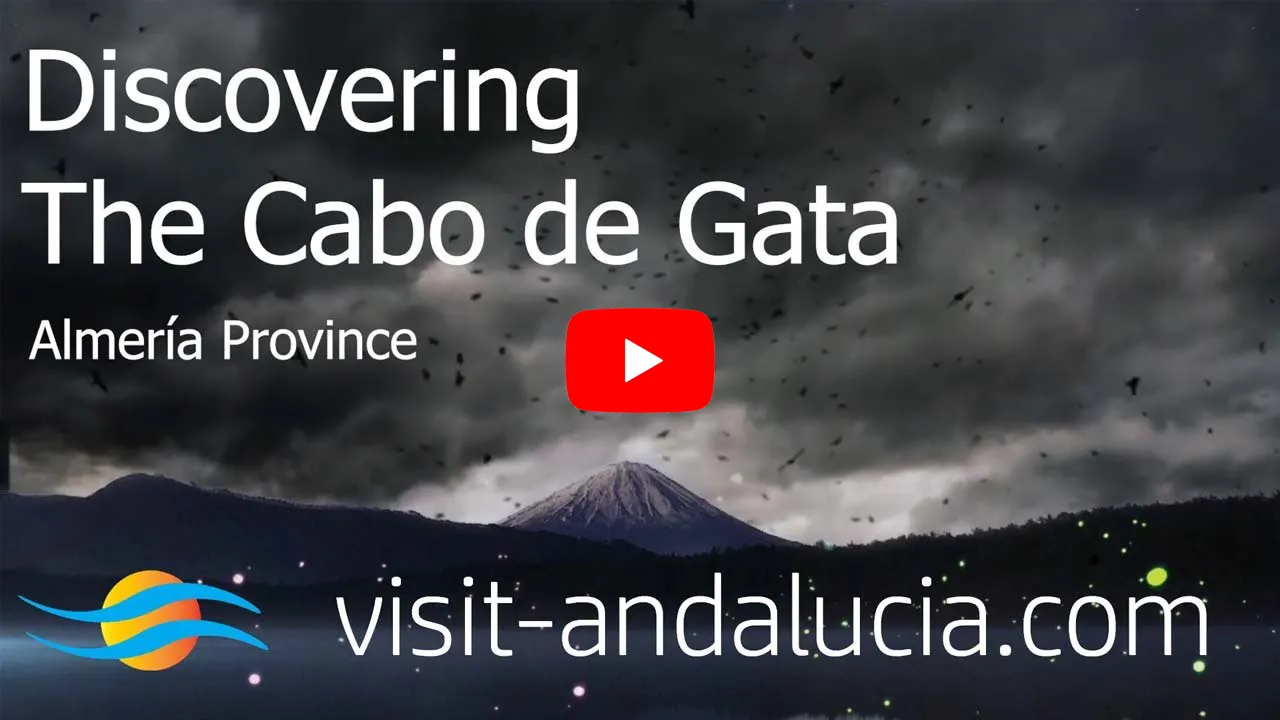
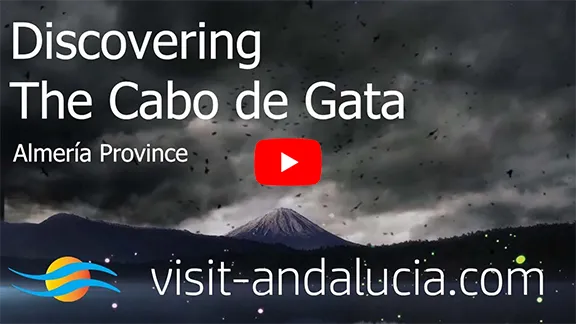
Video By: Julie Evans
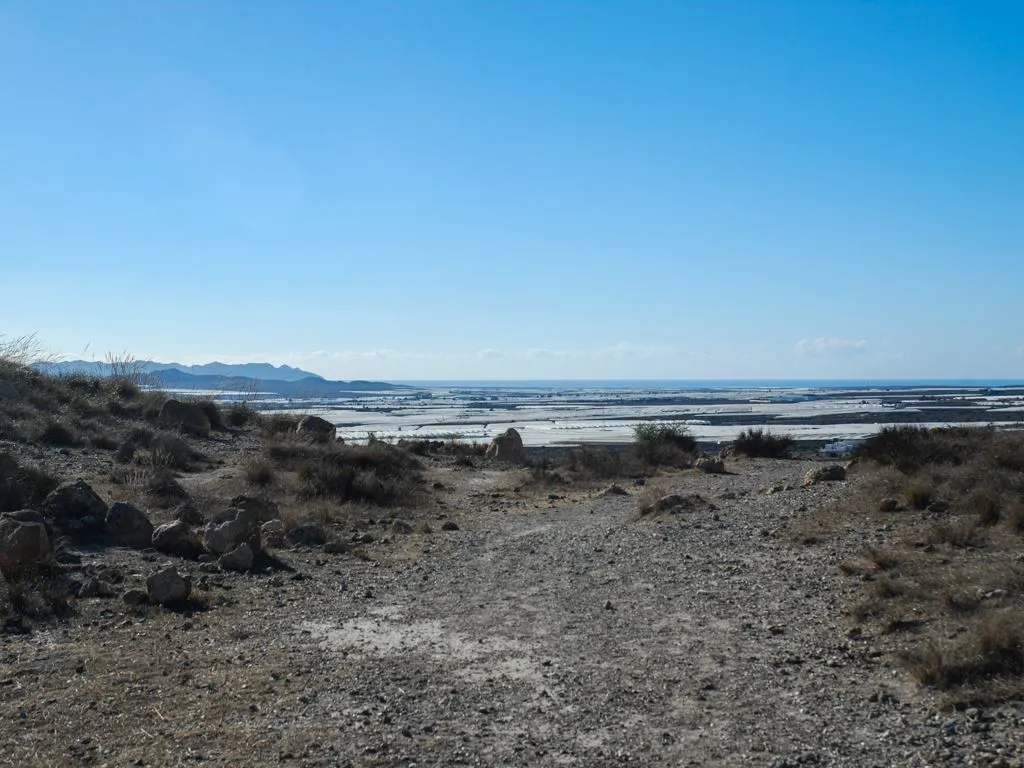
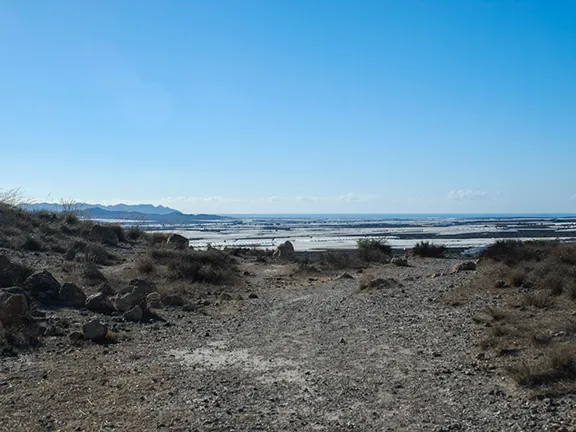
View of the Coast
So much for the glittery bits. Now we can look at the dacite that has an equally interesting history. Before I go any further, I will tell you that we are in the crater of a volcano near Nijar which is on the northern edge of the Cabo de Gata, a famously volcanic landscape.
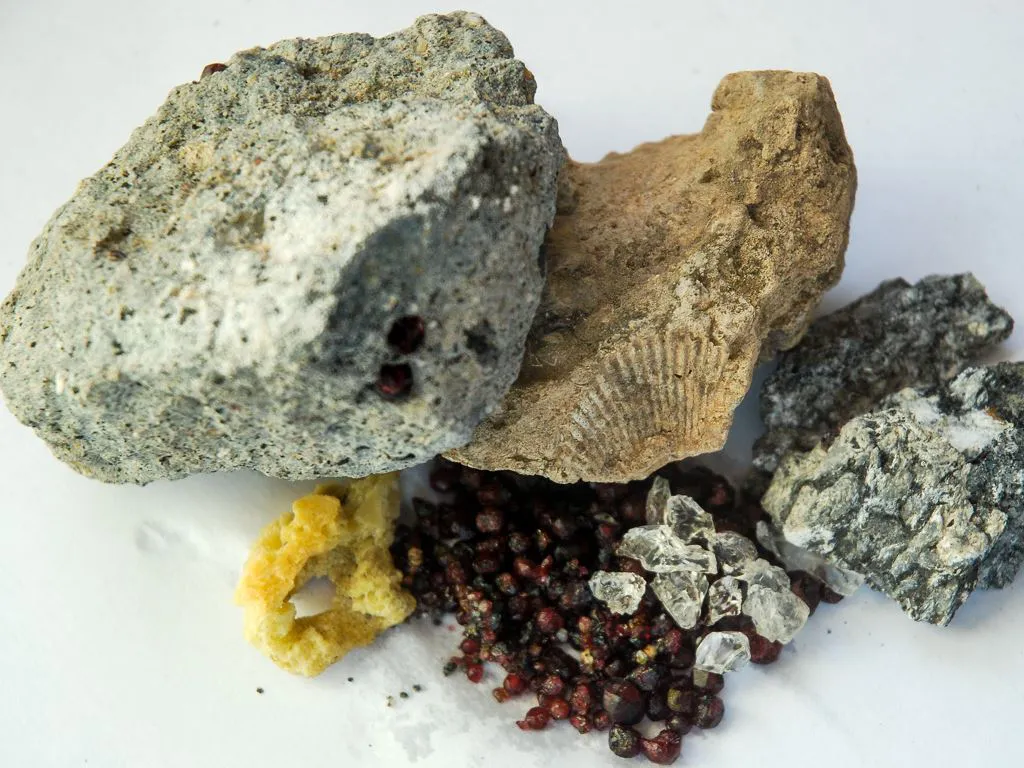
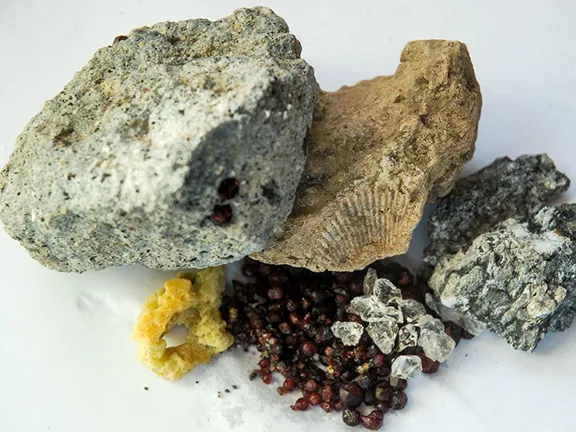
Rhyolite, Fossil Coral, Garnet and Sapphires
The geological history of the Cabo de Gata is a fascinating subject but hugely complicated. Briefly, 15 million years ago, the whole area was beneath the sea. The African tectonic plate was and is pushing against the Eurasian plate. In the Cabo de Gata area, they meet in a more or less straight line that runs southwest to northeast along a line called the Carboneras fault. The fault cuts deep into the earth’s crust, the source of the magma. About 10 million years ago, eruptions beneath the sea formed volcanoes, just the same way as if the eruptions had been above the water except, due to the water, the lava cooled more rapidly than it would in air, hence the small crystals mentioned above.
To confirm the fact that the volcanoes were beneath the sea, the crater of the Nijar volcano, that only measures something short of a kilometre in diameter, has a rim that is formed of fossilised coral that is now 250 metres above sea level.
About 7.5 million years ago, the pressure of the two tectonic plates pushed the Nijar volcano into the air, along with the other Sierras in this part of Almeria. The seawater escaped through a weak part of the rim on the south side of the crater, forming a neat entrance into the crater itself.
The geology and chemistry is the hard part. The walk is easy and starts at a track on a road that runs parallel to the A7 at Nijar. Leave the A7 at the Nijar junction and head towards the village. After 200 metres you will see a low, yellow building to your right and an unmetalled track leading off to your right. Follow this track for about 1 kilometre. The path you want is an obvious feature leading to a cleft in a ridge. It follows the line of the Barranco Hoyazo, also enticingly called Rambla de las Granatillas (Small garnets ravine).
Walk up this path, which is quite steep and eroded with water channels in places until you reach the cleft. You are now standing on the southern edge of the crater where the sea escaped so many years ago. The crater is almost circular and the far rim is just less than 1 kilometre away.
Follow the obvious path down into the crater. The four humps in the centre are the remains of the granite extrusions where the lava erupted from the earth, they are called plugs or nipples. If you look up at the rim you will see that there is a band of sandy coloured, fragmented, coarse rock. This is the remains of the coral reef formed when the crater was beneath the surface of a shallow sea. You will find pieces of this fossilised coral lying around. Some contain fossils. The one we found was that of a cockle like shellfish but, being at least 7.5 million years old, it is unlikely to be a species living today.
For those of you who are geology buffs, the Crater del Hoyazo is actually a pseudocrater with a very interesting history.
A pseudocrater, also known as a rootless cone, is a type of volcanic feature that resembles a crater but is not formed directly by volcanic activity. Rather, pseudocraters are formed by the explosive interaction between lava flows and surface water, such as lakes or wetlands or, in this case, the sea.
When the lava emerged beneath the sea, the intense heat caused the water to rapidly boil and vaporize, creating a steam explosion. This explosion caused the ground to be uplifted and displaced, forming a small, cone-shaped depression that resembles a volcanic crater.
Pseudocraters are typically much smaller than true volcanic craters and do not have a vent to the Earth's subsurface. They are often found in other volcanic regions that have interacted with water, such as Iceland and Hawaii, and are indicators of previous volcanic activity.
Beneath the coral rim the pale grey rock is the dacite. Dacite is formed from the partial melting of continental crust or oceanic crust, which results in a magma with an intermediate composition between that of basalt and rhyolite. Dacite magma typically has a high viscosity, which means that it is thick and does not flow easily. The fact that the matrix here is dacite containing cordierite helps confirm the mountain building processes associated with the Cabo de Gata.
When dacite magma is erupted onto the Earth's surface, it may form a volcano, such as a stratovolcano or a lava dome. As the magma cools and solidifies, it forms dacite rock. The exact process by which the magma solidifies can vary, depending on factors such as the rate of cooling and the presence of gases and minerals in the magma.
One way that dacite rock can form is through the slow cooling and crystallization of magma beneath the Earth's surface. This process allows time for the minerals in the magma to grow and form distinct crystals, resulting in a coarse-grained texture in the rock.
Another way that dacite rock can form is through the rapid cooling of magma on the Earth's surface, or in this case, beneath the sea. This can happen when the magma is erupted explosively, causing it to cool quickly and solidify into a fine-grained texture.
In addition to being fine grained, this dacite is also fairly soft. Over the millennia it has eroded and been washed down to the bottom of the crater where you will see deep water channels carved into the soft rock. This is where the garnets and cordierite gather.
You can return the way you came or continue by following the Barranco Hoyazo path up the north east side of the crater to the rim. An easy path takes you northeast down to the Barranco del Algarrobo. Turn right until you hit an unmetalled track and turn right again to return to your vehicle for a total distance of 4 kilometres.
Please note. It is illegal to remove rocks or minerals from the confines of a Natural Park.
The Rambla de las Granatillas drains the El Hoyazo crater and, over time, has created an alluvial fan that is plainly evident as you walk up to the crater rim. The alluvial fan is made up of a huge quantity of loose garnets mixed up with almandine-rich dacite. During the late 19th and early 20th century, these deposits were commercially exploited to be used as various abrasives. At its peak of production at the end of the 19th century, 10 to 50 cm thick layers with a garnet content up to 50% in volume were mechanically dug, magnetically selected, crushed and sifted to obtain 6 tons of pure sand-sized almandine garnet daily.
In 1996 a small group tried unsuccesfully to rejuvenate the industry.